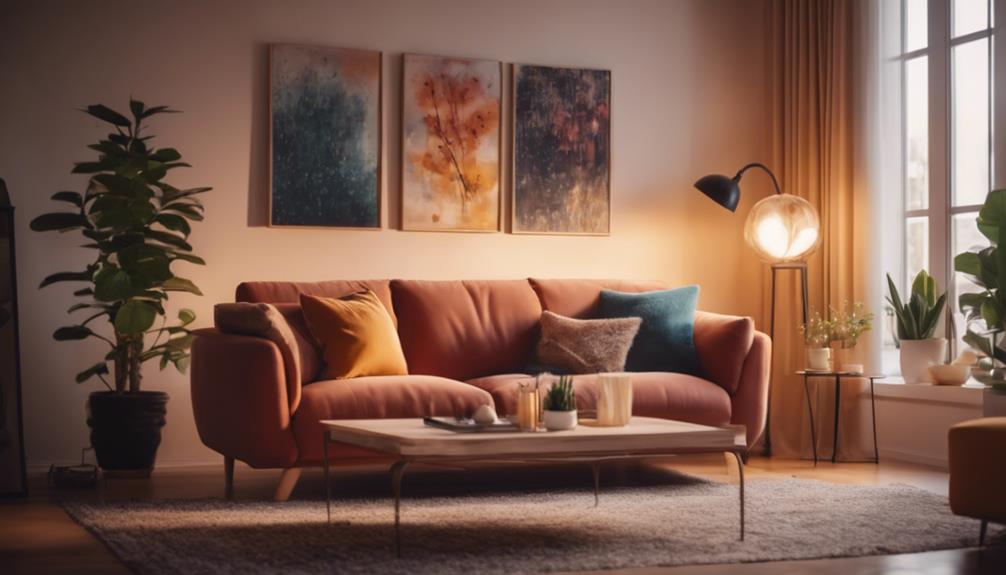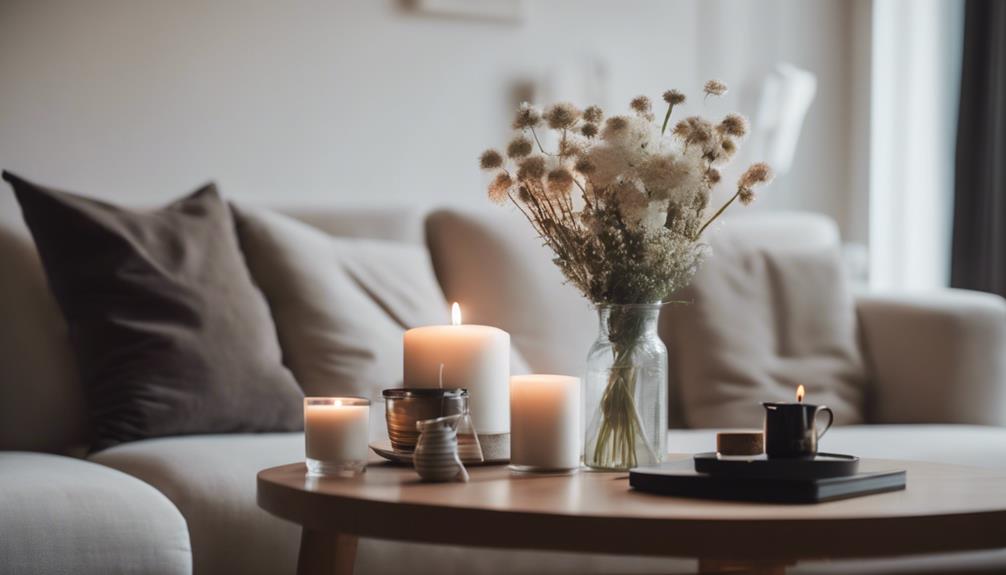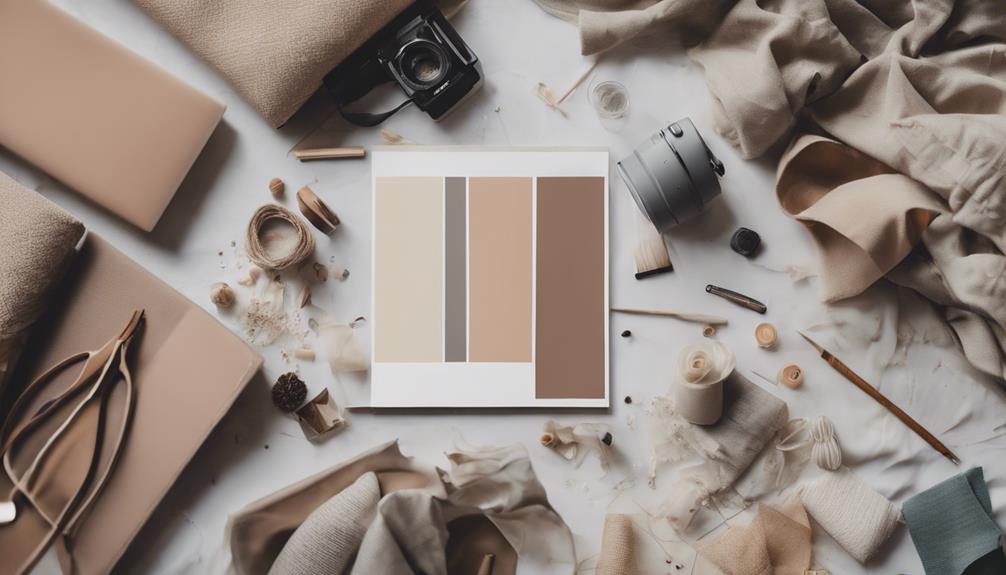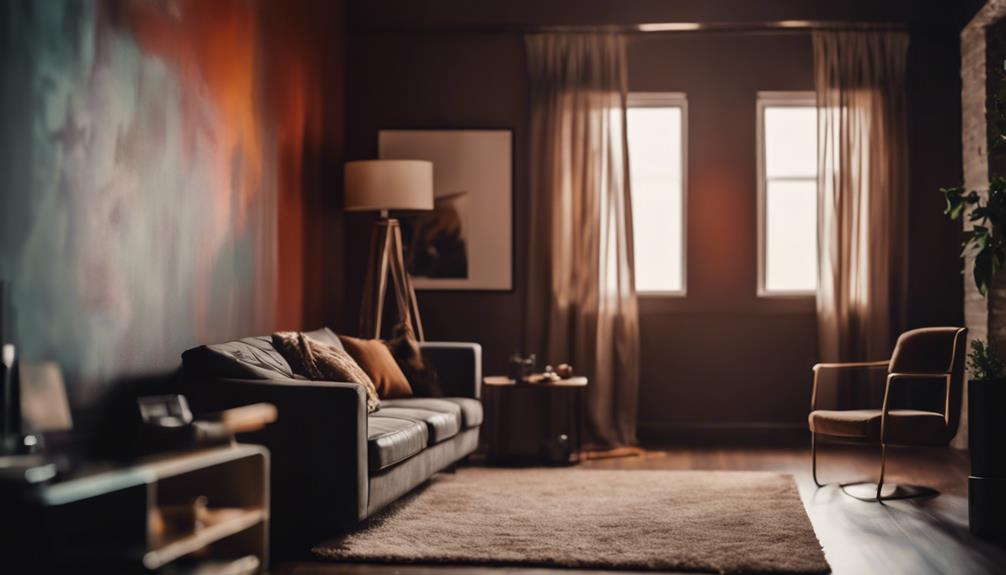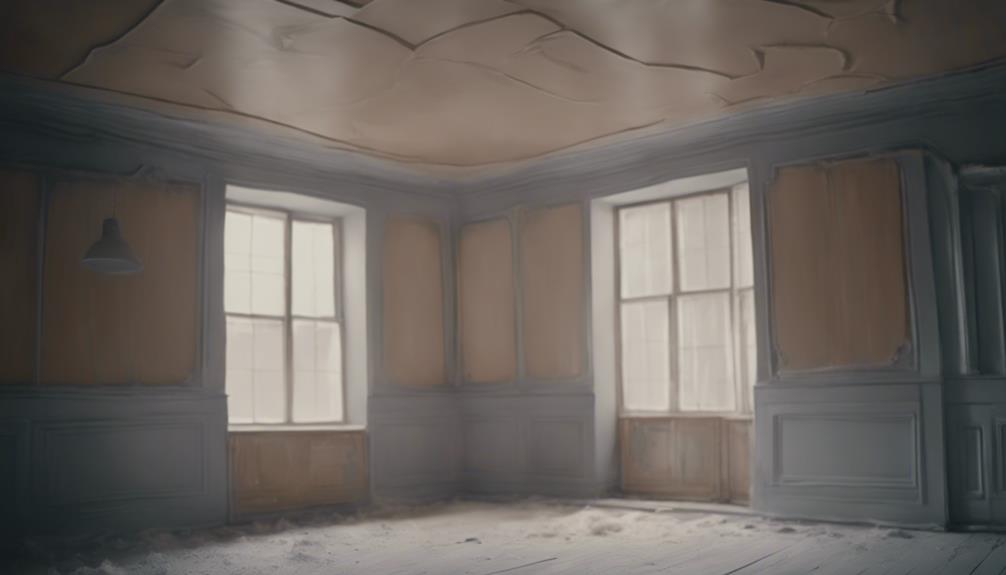Interior backgrounds are key players in design, setting the vibe and feel of a room. They impact your emotions and how you view a space. Did you know colors can affect your mood? Warm shades cozy up a room while cool tones bring calmness. Backgrounds add depth, making your furniture pop. They can even make a small space seem bigger! By choosing carefully, you create a comfortable and happy environment. Want to discover more reasons why interior backgrounds are essential? Keep exploring to uncover the secrets behind their power to transform your space.
Key Takeaways
- Setting the Tone: Wallpaper transforms spaces with colors, patterns, and textures, creating ambiance.
- Visual Appeal: Impact mood and emotions through color psychology, enhancing the aesthetic appeal of a room.
- Depth and Dimension: Layering textures, colors, and patterns add visual interest and depth to a space.
- Mood Influence: Backgrounds can shape emotions, perceptions, and well-being in a room.
- Personalization: Reflect individual style, preference, and creativity through carefully selected interior backgrounds.
Setting the Tone and Ambiance
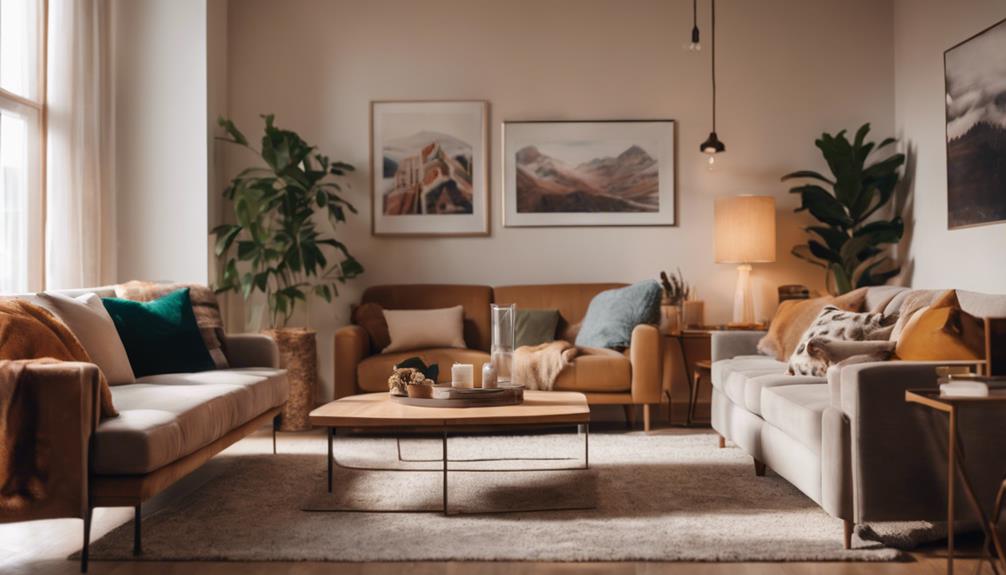
When setting the tone and ambiance of a room, interior backgrounds play a crucial role in influencing the overall feel and mood. One key element in interior backgrounds that can greatly impact the look and atmosphere of a space is wallpaper. Wallpaper comes in a myriad of designs, colors, and textures, allowing you to create various effects in a room.
For example, choosing a bold and vibrant wallpaper can add a sense of energy and personality to a space, making it feel lively and dynamic. On the other hand, opting for a more subtle and neutral wallpaper can create a calming and relaxing ambiance, perfect for bedrooms or cozy reading nooks.
The beauty of wallpaper is that it offers endless possibilities for expressing your style and setting the mood in a room. Whether you prefer floral patterns for a touch of elegance or geometric designs for a modern look, the right wallpaper can transform a space and enhance its overall aesthetic appeal.
Enhancing Visual Appeal
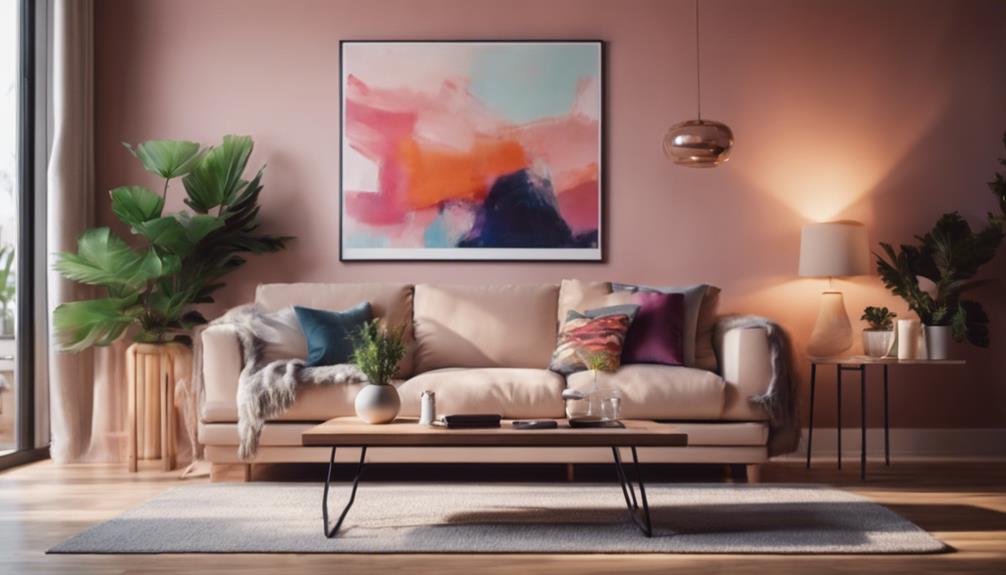
When it comes to enhancing visual appeal in a room, color plays a significant role. The right choice of colors can impact mood, set the tone, and add visual depth to the space.
Color Impacts Mood
Color psychology is a pivotal factor in enhancing interior spaces, influencing mood and emotions. The color of walls adds warmth and sets the room's tone. Warm colors like red and orange create a cozy atmosphere, ideal for living rooms or dining areas. Cool colors such as blue and green promote relaxation, great for bedrooms or home offices. Bright colors like yellow can energize a space. Neutral tones like beige and grey offer a versatile backdrop for various design styles and furnishings, allowing for easy accent changes. Careful color selection is key to creating the desired ambiance in each room.
Color psychology plays a crucial role in enhancing the visual appeal of interior spaces by influencing mood and emotions. The color of your walls adds warmth and sets the tone for the room. Warm colors like red and orange can create a cozy and inviting atmosphere, perfect for living rooms or dining areas. On the other hand, cool colors like blue and green promote relaxation and calmness, ideal for bedrooms or home offices. If you're looking to energize a space, consider using bright colors like yellow to uplift the mood. Neutral colors like beige and grey provide a versatile backdrop for different design styles and furnishings, allowing you to change accents easily. Choose your colors wisely to create the desired ambiance in each room.
Sets the Tone
Enhancing the visual appeal of a room starts with selecting the right interior backgrounds that establish the tone through colors, patterns, and textures. Here are some key points to contemplate when choosing interior backgrounds:
- Accent wall: Introducing a bold or contrasting accent wall can instantly elevate the style and focal point of a room.
- Color schemes: Harmonizing colors within the interior backgrounds can create a cohesive and inviting atmosphere.
- Texture variety: Mixing textures like wood, fabric, or metal can add depth and visual interest to the space.
- Pattern play: Incorporating patterns in wallpapers or textiles can inject personality and character into the room, making it more dynamic and engaging.
Adds Depth Visually
Adding depth visually through carefully selected interior backgrounds enhances the overall aesthetic appeal of a room. Design plays an essential role in achieving this effect. By layering different elements in the background, such as textures, colors, and patterns, you create a sense of dimension that elevates the space. Think of the background as a canvas that sets the stage for your furniture and decor to shine. To help you visualize this concept, consider the following table:
| Elements | Function | Example |
|---|---|---|
| Textures | Add tactile interest | Rough stone wall |
| Colors | Create mood and atmosphere | Bold accent wall |
| Patterns | Infuse personality | Geometric wallpaper |
Influencing Mood and Perception
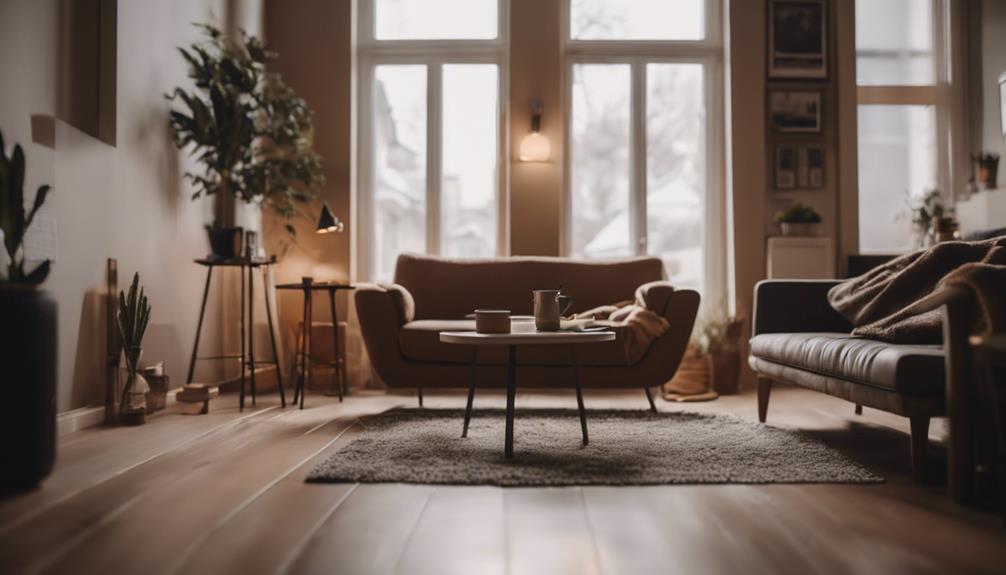
When considering how interior backgrounds can influence mood and perception, it's fascinating to see how the colors and textures in a room can impact your emotions.
The design choices made in a space can shape how you feel and perceive the environment around you. Understanding this connection between interior backgrounds and your emotional responses allows for a more intentional and enjoyable experience in any room.
Mood Impact Analysis
Choosing the appropriate interior backgrounds can greatly affect the mood and perception of a room, making a lasting impression on its occupants. Here's how interior backgrounds can influence the ambiance:
- Color Psychology: Different colors evoke various emotions; for example, blue can create a sense of calmness, while red may energize a space.
- Texture Impact: The texture of interior backgrounds can influence how cozy or formal a room feels; consider soft fabrics for comfort or sleek surfaces for sophistication.
- Pattern Play: Patterns add visual interest and can impact the perceived size of a room; bold patterns can make a space feel dynamic, while subtle ones create a sense of harmony.
- Lighting Effects: Proper lighting enhances the chosen interior backgrounds, affecting how colors and textures are perceived, ultimately shaping the overall mood.
Perception Through Design
Interior backgrounds wield a significant influence on shaping the mood and perception within a space. The choice of wallpaper, with its colors, patterns, and textures, can transform a room's ambiance entirely.
Vibrant and bold wallpapers can make a room feel lively and energetic, while soft and neutral wallpapers create a sense of calm and relaxation. The design of wallpaper can also play tricks on the eyes, making small rooms appear larger or adding depth to a space.
Emotional Response Connection
Shaping the mood and perception within a space, interior backgrounds play a pivotal role in evoking emotional responses through their design elements. The colors, textures, and patterns of backgrounds create a specific atmosphere that can influence how you feel in a room.
Here are four ways interior backgrounds influence your emotional response:
- Creating a Focal Point: Backgrounds can draw attention to a specific area in a room, setting the tone for the space.
- Eliciting Emotions: Different colors and textures can evoke various feelings, such as calmness, energy, or coziness.
- Impacting Perception: The choice of backgrounds can make a room feel more spacious or intimate.
- Setting the Design Scheme: Backgrounds establish the overall aesthetic of a space, contributing to its visual appeal and ambiance.
Impacting Well-being and Comfort
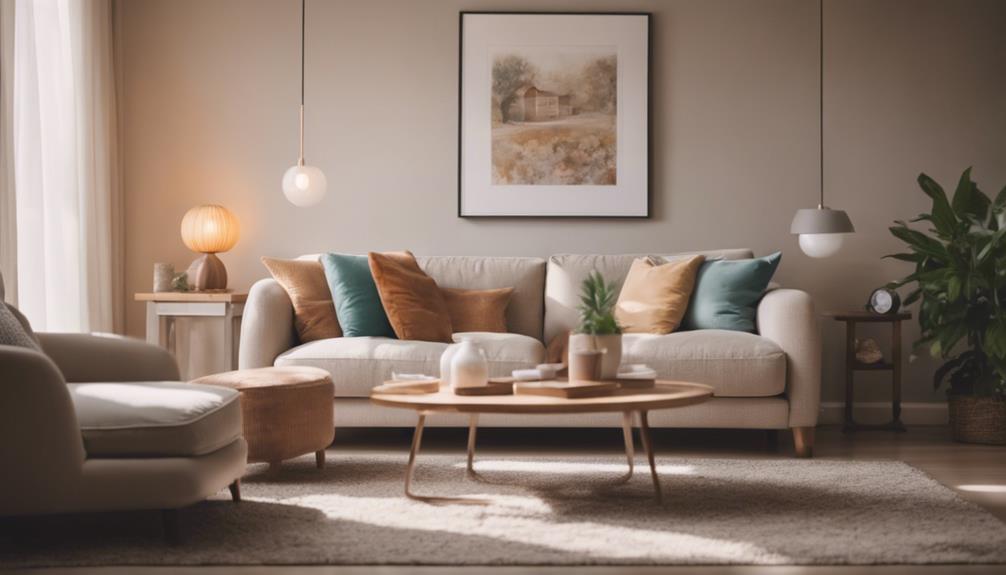
Enhancing your well-being and comfort, interior backgrounds play a significant role in influencing your mood and overall satisfaction in a space. Wallpaper, with its myriad of colors and textures, can have a profound impact on your stress levels and relaxation.
For example, soft pastel wallpapers can create a calming atmosphere, while vibrant and bold patterns might evoke energy and excitement. Thoughtfully chosen interior backgrounds can enhance mental clarity, helping you feel more focused and at ease.
By selecting backgrounds that resonate with you personally, such as incorporating your favorite colors or patterns, you can contribute to a sense of belonging and contentment within your space. Creating a space that aligns with your preferences not only impacts your well-being but also influences how comfortable and happy you feel in that environment.
Creating Cohesive Environments
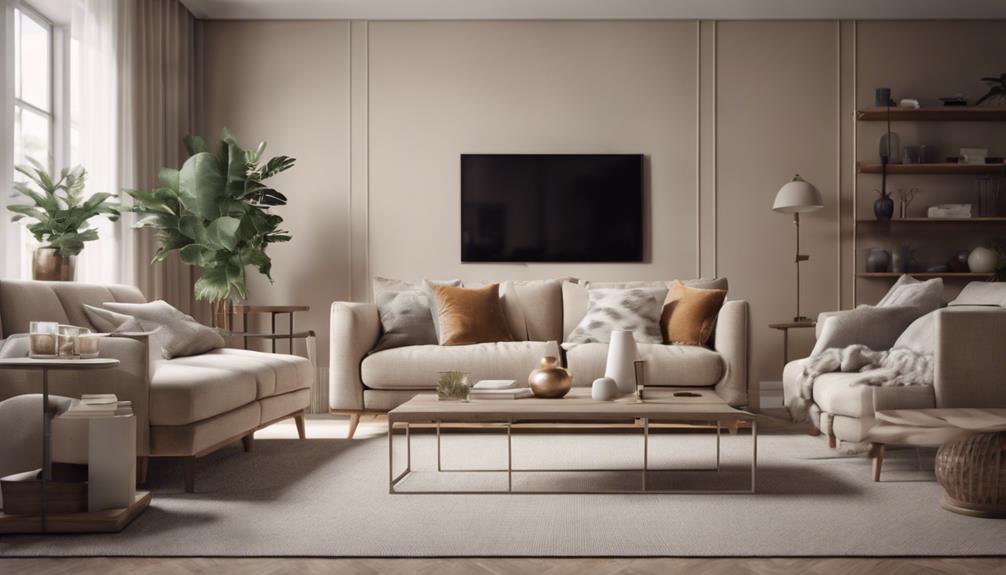
When creating cohesive environments, maintaining a focus on unity in design is crucial to tie together different elements. By enhancing the visual appeal of a space with thoughtful interior backgrounds, you can set the mood and style of the room.
Ensuring that all design elements work harmoniously can make the room more inviting and visually pleasing.
Unity in Design
To achieve a cohesive environment in interior design, integrating unified backgrounds is essential for harmonizing elements within a space. Here are four key points to ponder when aiming for unity in design:
- Color Coordination: Select backgrounds that complement each other and tie in with the room's color scheme.
- Texture Harmony: Guarantee that textures across different elements like furniture, walls, and decor work together cohesively.
- Pattern Consistency: Use patterns sparingly and make sure they blend well with the overall design theme.
- Balanced Aesthetics: Aim for a balanced look by incorporating backgrounds that enhance the room's visual appeal without overwhelming other design elements.
Enhancing Visual Appeal
Creating cohesive environments in interior design relies heavily on integrating backgrounds that harmonize with all elements within a space. Wallpaper is a versatile tool that can greatly enhance the visual appeal of a room by adding texture, color, and pattern.
When selecting wallpaper for a space, consider the existing furniture, decor, and architectural features to guarantee a seamless integration. Opt for wallpaper designs that complement the overall aesthetic you wish to achieve, whether it's creating a cozy atmosphere with warm tones and soft patterns or a modern look with sleek textures and bold colors.
Defining Aesthetic Preferences
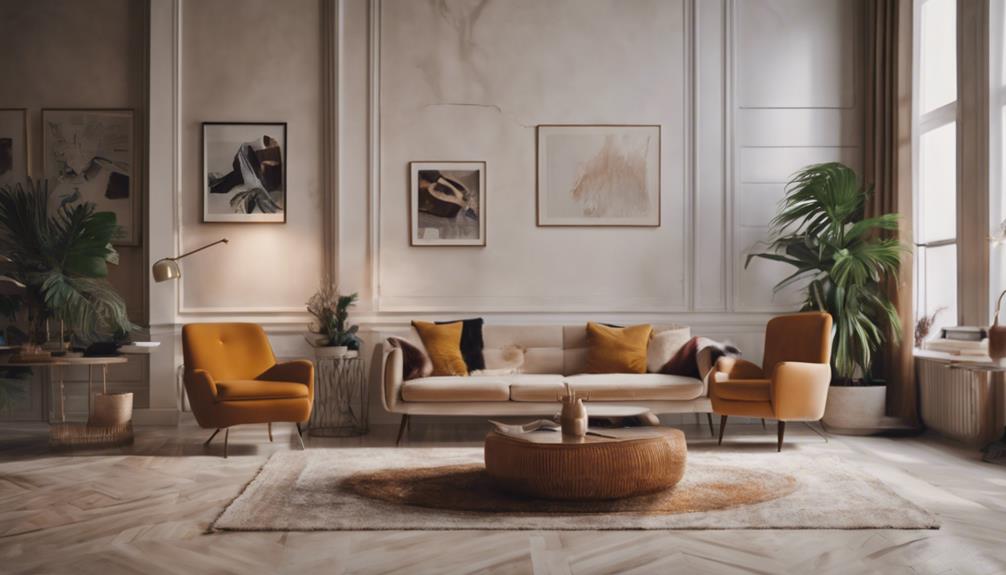
Understanding individual aesthetic preferences is crucial for curating a personalized and visually pleasing interior space. When it comes to defining aesthetic preferences, your choices can greatly impact the overall look and feel of your home.
Here are four essential points to ponder:
- Reflecting Your Style: Aesthetic preferences in interior backgrounds, such as wallpaper, mirror your unique taste and personality, making your space truly yours.
- Color Schemes and Textures: Your aesthetic preferences guide decisions on color schemes and textures, shaping the mood and ambiance of each room.
- Patterns and Elements: Selecting patterns that align with your aesthetic preferences can add depth and visual interest to your living spaces.
- Creating Cohesiveness: By adhering to your aesthetic preferences, you can establish a cohesive and harmonious environment that feels just right for you.
Transforming Living Spaces Creatively
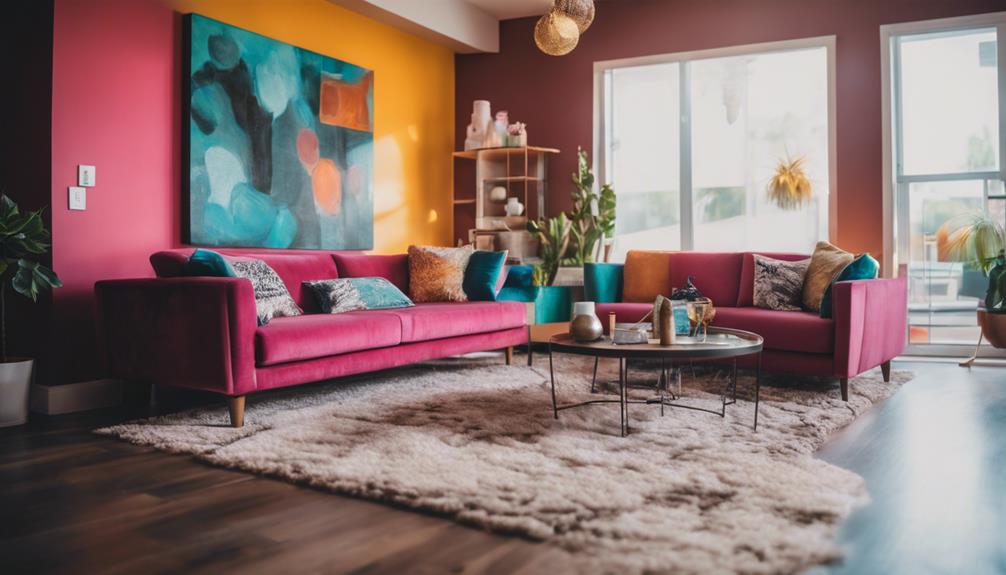
Transform your living spaces creatively by infusing unique design elements that reflect your personality and style. One way to add character to your home is by using wallpaper. Wallpaper comes in a variety of colors, patterns, and textures, allowing you to personalize your space according to your taste. Whether you prefer a bold, eye-catching design or a subtle, elegant pattern, wallpaper can instantly transform a room and make a statement.
Consider using wallpaper to highlight a feature wall in your living room or bedroom. This can draw attention to a specific area and create a focal point in the room. Additionally, wallpaper can be used to add depth and dimension to a space, making it feel more dynamic and visually interesting.
Personalizing Sanctuaries Through Design
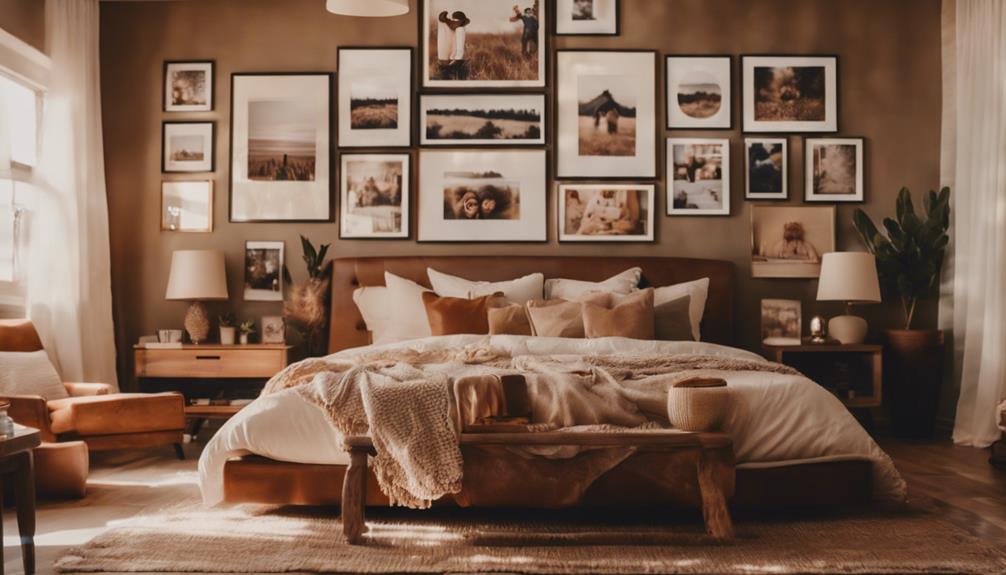
When personalizing sanctuaries through design, you can infuse your unique style and preferences to create a space that truly reflects who you are. One way to achieve this is by using wallpaper to add personality and charm to your sanctuary.
Here are four tips to help you personalize your space effectively:
- Choose Patterns That Speak to You: Select wallpaper designs that resonate with your personality and bring joy to your living environment.
- Mix and Match: Don't be afraid to mix different wallpaper patterns or textures to create a visually dynamic space that showcases your creativity.
- Highlight Meaningful Elements: Incorporate wallpaper that holds sentimental value or represents your interests to make your sanctuary feel truly personal.
- Consider Accent Walls: Use wallpaper on a single wall to create a focal point in the room and draw attention to a specific area that reflects your style.
Reflecting Unique Tastes and Styles
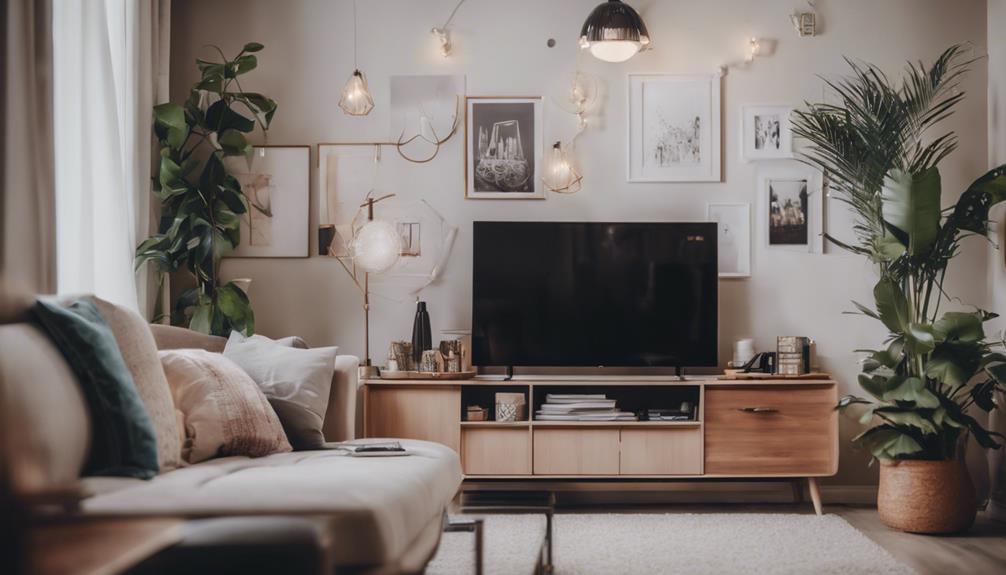
Reflect your unique tastes and styles through carefully selected interior backgrounds that serve as a canvas for your personality to shine. Wallpaper, with its endless array of designs, colors, and textures, offers a fantastic opportunity to showcase your individuality. Whether you prefer bold and vibrant patterns or subtle, understated textures, your choice in wallpaper can truly make a statement in your living space.
Maximizing Space Functionality
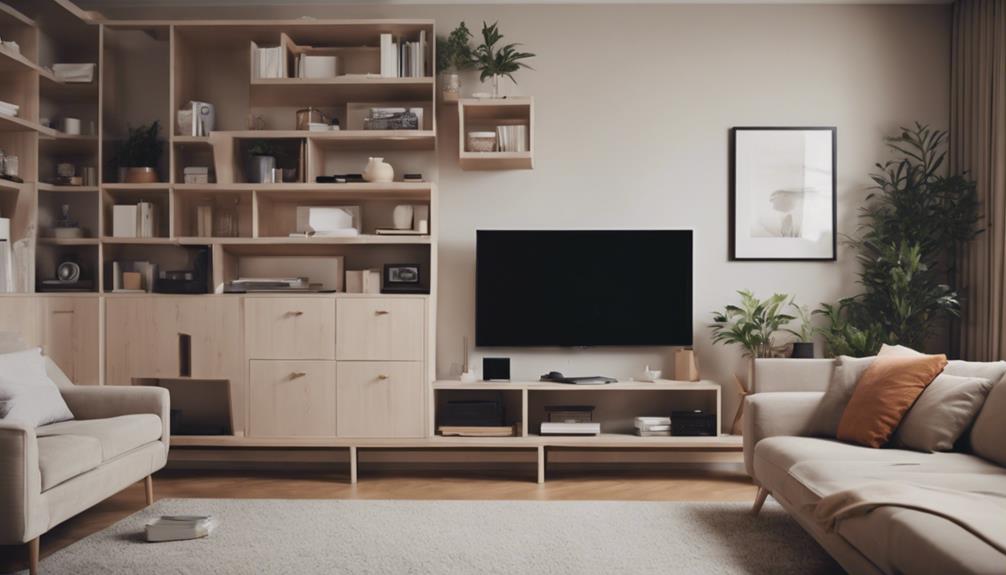
To optimize the functionality of your living space, consider how interior backgrounds can effectively define and enhance the purpose of each area within a room. When it comes to maximizing space functionality, the choice of wallpaper can make a significant difference. Here are some key tips to help you make the most of your living space:
- Define Zones: Use different wallpaper designs to visually separate areas for specific activities such as dining, relaxing, or working. This helps create a sense of organization and purpose within the room.
- Efficient Utilization: Properly designed wallpapers contribute to efficient space utilization, making both small and large rooms more functional and practical. Choose wallpapers that complement the intended use of each area.
- Enhance Flow: Utilizing various textures, colors, and patterns in your interior backgrounds can improve the flow of your space. Harmonizing wallpapers can visually connect different areas, creating a cohesive and inviting atmosphere.
- Optimize Layout: Well-planned interior backgrounds can optimize the layout of your space, ensuring that every corner serves a specific function and enhances your overall living experience. Consider wallpapers that complement the room's layout and purpose.
Frequently Asked Questions
How Can Interior Backgrounds Affect Productivity in a Space?
Having the right interior background in a space can vastly impact your productivity. Bright colors and natural light can boost your mood and energy levels, making you more focused and efficient.
On the other hand, cluttered or dull backgrounds may cause distractions and lower your motivation. By creating a visually appealing and organized environment, you're setting yourself up for success and a productive work or study session.
Do Interior Backgrounds Impact the Resale Value of a Property?
When it comes to the resale value of a property, interior backgrounds play a vital role. Imagine stepping into a house with outdated wallpaper and worn-out carpets. Now picture another one with sleek, modern finishes and a fresh coat of paint. Which one would you be willing to pay more for?
The aesthetics and overall condition of a property's interior can greatly impact its resale value, making it a wise investment to spruce up your interiors.
Can Interior Backgrounds Influence Social Interactions Within a Space?
When it comes to social interactions within a space, interior backgrounds can play a crucial role. The colors, layout, and overall ambiance of a room can impact how people feel and behave.
Bright, open spaces often encourage lively conversations and gatherings, while cozy, intimate settings may foster deeper connections.
Is There a Link Between Interior Backgrounds and Mental Health?
When it comes to mental health, interior backgrounds play an essential role in shaping your well-being. The colors, lighting, and layout of a space can impact your mood and mindset.
Bright, airy rooms may boost your spirits, while cluttered or dark spaces could weigh you down. Creating a harmonious environment with elements that promote relaxation and positivity can have a profound effect on your mental health.
How Do Interior Backgrounds Cater to Different Age Groups in a Household?
When designing interior backgrounds for different age groups in a household, consider their unique needs and preferences.
For kids, vibrant colors and creative decor can stimulate imagination.
Teenagers might appreciate a mix of functionality and style, like a study space that reflects their personality.
Adults may prioritize comfort and relaxation, such as cozy corners for reading.
Tailoring each area to suit its occupants can create a harmonious living environment for everyone to enjoy.
Conclusion
Just like how a painter uses colors to create a masterpiece, interior backgrounds play an essential role in setting the tone and ambiance of a space. They've the power to influence our mood, perception, and overall well-being.
By carefully designing and personalizing our living spaces, we can transform them into sanctuaries that reflect our unique tastes and styles.
So, next time you walk into a room, remember that the background is more than just a backdrop – it's a canvas waiting to be filled with creativity and comfort.
